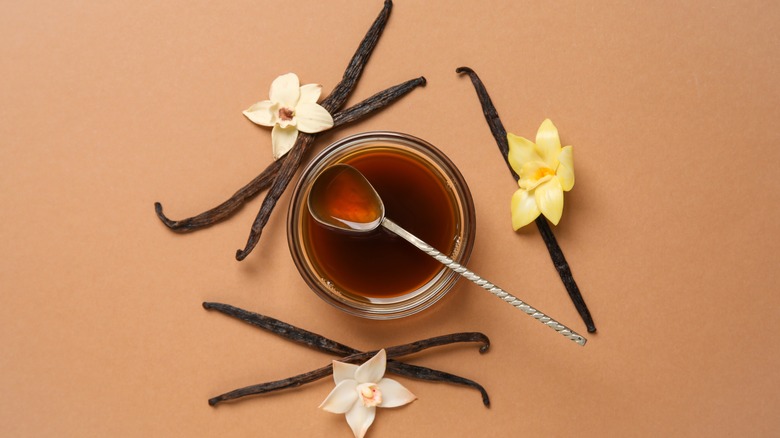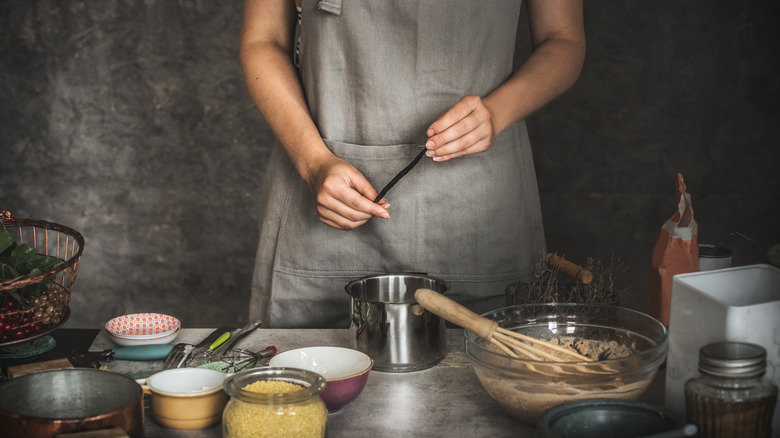Added Too Much Vanilla To A Dish? Here's How To Fix It
Imagine you spent the day shopping for ingredients to make your favorite baked treat. Once back at home, you get to work, combining the dry ingredients. But when you go to add that necessary and precious teaspoon of vanilla, out comes a waterfall of aromatic extract. As anyone who has been in this situation can tell you, an overabundance of vanilla can result in either undesired bitterness in a savory dish or your prized cookie recipe tasting more like a candle than what grandma used to make.
So what should you do? First, don't panic! the dish isn't necessarily ruined, and there are some solutions to mitigate the damage. The first option to consider is increasing the quantities of the other ingredients to maintain the correct ratios. While this will net more food, really, who has ever complained about having too many extra muffins? However, this can be impractical if you have limited bakeware/cookware or storage space.
Another option is to counter the overuse of vanilla with an equal and opposite flavor profile. After all, the key in baking and cooking is balance. Try a combined tablespoon of citrus juice and zest or a pinch of salt to cut the floral sweetness of vanilla while deepening the flavor of the dish. If the vanilla has caused an overly bitter taste, an acidic component such as sour cream, buttermilk, or even apple sauce can offer a nice counterweight.
Finally, if you have the time, let the batter rest. Doing so will allow some of the vanilla extract's alcohol to dissipate, reducing its potency.
Other uses for vanilla in the kitchen beyond baking
While vanilla is most commonly known for its uses in baking, it's a more versatile ingredient than it typically gets credit for, with applications that range far beyond the world of confectionary delights. Try these outside-the-box ideas to enhance your vanilla game.
One great idea is to add it to roasted vegetables. Combine a dash of vanilla with olive oil and your favorite spices and toss some carrots, sweet potatoes, or other root vegetables in the marinade. The vanilla helps highlight the natural sweetness of the veggies and helps with the caramelization process once inside the oven.
If you're experimenting with a new store-bought tomato sauce and find it too acidic, a dash of vanilla can help balance the flavor profile of the sauce, bringing out its natural sweetness while covering up some of the bitterness. This trick works for homemade sauces that haven't turned out quite right as well, and should be added before you're done cooking it.
Finally, if you're looking to spice up (literally) that bottle of bourbon sitting around the house, infusing it with vanilla is an artful and sophisticated way to add depth of flavor; plus, it goes great in cocktails. All you need is a bottle of whiskey and a vanilla pod. Slice the pod, remove a bean, pop it in the bottle of whiskey, and let it sit for up to two weeks. Voila! You now have vanilla-infused whiskey.


